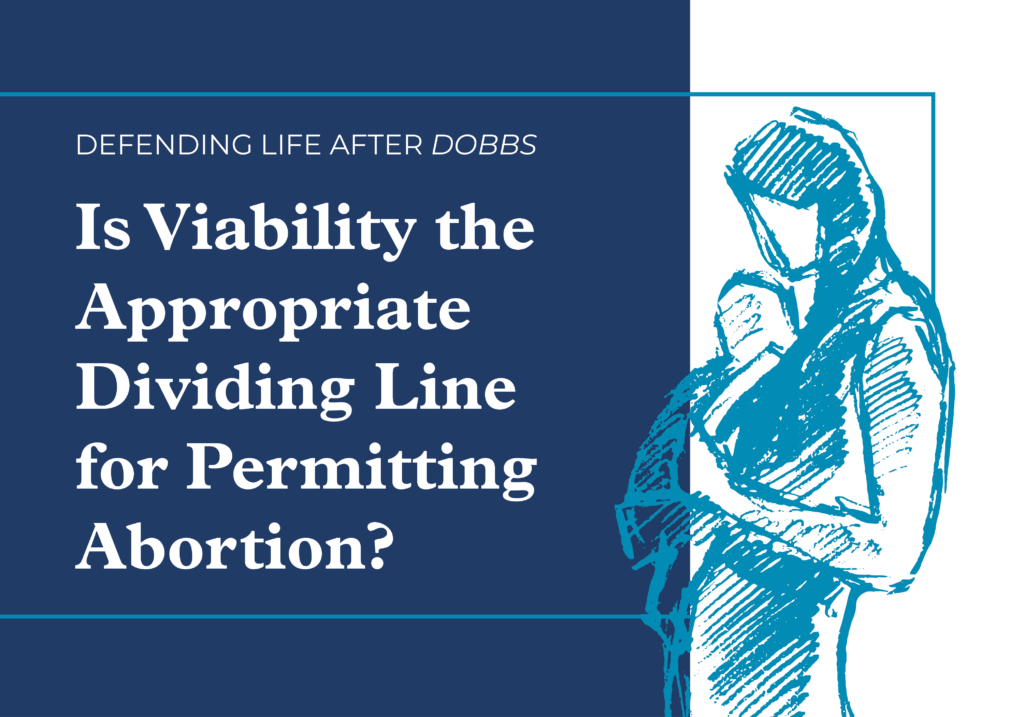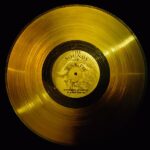
Published July 19, 2023
Historically, the debate about abortion has involved a fierce argument about when during pregnancy to draw the line. Which point in gestation should demarcate when abortion becomes impermissible? Commonly proposed dividing lines between fertilization and birth are implantation, the emergence of a recognizable human form, the moment of “quickening,” sentience, detectable heartbeat, the ability to feel pain, and viability outside the womb.
Roe v. Wade arbitrarily drew the line at viability, or the supposed ability of the child to survive outside the womb. In the majority opinion, Justice Harry Blackmun famously wrote: “With respect to the State’s important and legitimate interest in potential life, the ‘compelling’ point is at viability. This is so because the fetus then presumably has the capability of meaningful life outside the mother’s womb.” In other words, before viability, abortion was judged permissible; after that point, the state was justified in protecting fetal life and proscribing abortion. Blackmun defined viability as “the interim point” between conception and birth at which the fetus becomes “potentially able to live outside the mother’s womb, albeit with artificial aid.”1
There are both practical and fundamental objections to taking viability as the threshold for regulating abortion. First, the practical objection: the capability of the unborn child to live outside the mother’s womb varies according to the state of technology, both over time and geographically. Before modern developments in intensive care, it was thought that a baby born more than two months premature could not survive. That has changed as medical interventions have become increasingly sophisticated. In advanced medical facilities, unborn children born at 21 weeks have survived. If we believe the viability argument, we would have to believe that it is now morally and legally impermissible to abort a child at 21 weeks, when in 1973 it was permissible at 28 weeks, merely because technology has changed in the interim.
Furthermore, as pro-abortion bioethicist Peter Singer points out, “a six-month old fetus might have a fair chance of survival if born in a city where the latest medical techniques are used, but no chance at all if born in a remote New Guinea village.”2 What if a woman flies from New York to New Guinea to have an abortion? It is illogical to conclude that it is impermissible to have an abortion when she takes off but that it becomes permissible when she lands. Justice Sandra Day O’Connor highlighted this trouble in her dissent in the Akron case (1983).3
But there is a more fundamental objection to viability as a dividing line. It is sometimes said that viability is the proper scientific solution to the abortion debate because viability is (supposedly) measurable. But the choice of viability as our moral standard is not scientific at all. It is a philosophical or moral choice, and it does not withstand scrutiny. To take viability as the ethical or legal threshold ignores the reality that, far from being able to survive on his own as Blackmun contended, each human being arrives in the world in a state of radical dependency. Unlike Adam and Eve in the book of Genesis or the warriors sown from the dragon’s teeth in Greek mythology, we human beings do not spring up immediately as fully formed adults capable of going it alone.
Unlike most other mammals—for instance, the foal that clambers to its feet moments after birth—our period of dependency after birth is much longer. Intensive support is required to sustain not just the prematurely born infant but also the baby born at term. Some with disabilities remain radically dependent their entire lives. No child is truly “viable” at birth, not even in the sense that Blackmun implied. Every child remains dependent on essential care for a period of time; the only change after birth is that he can depend on people other than his mother. Therefore, strictly speaking, if viability must be our criterion, no infant would satisfy it for at least several years after birth, and perhaps much longer.
In truth, no one really believes that viability is a viable dividing line. Overjoyed expecting parents don’t wait until 24 weeks’ gestation to call their new one a “baby” or to refer to themselves as “mother” and “father.” Long before viability, they celebrate their child’s arrival, calling around to family and friends, sticking the ultrasound image of their child on the fridge.
Endnotes:
- Roe v. Wade, 410 U.S. 113, 160 (1973).
- Peter Singer, Practical Ethics (Cambridge: Cambridge University Press, 2011), 127.
- City of Akron v. Akron Center for Reproductive Health, 462 U.S. 416 (1983).












